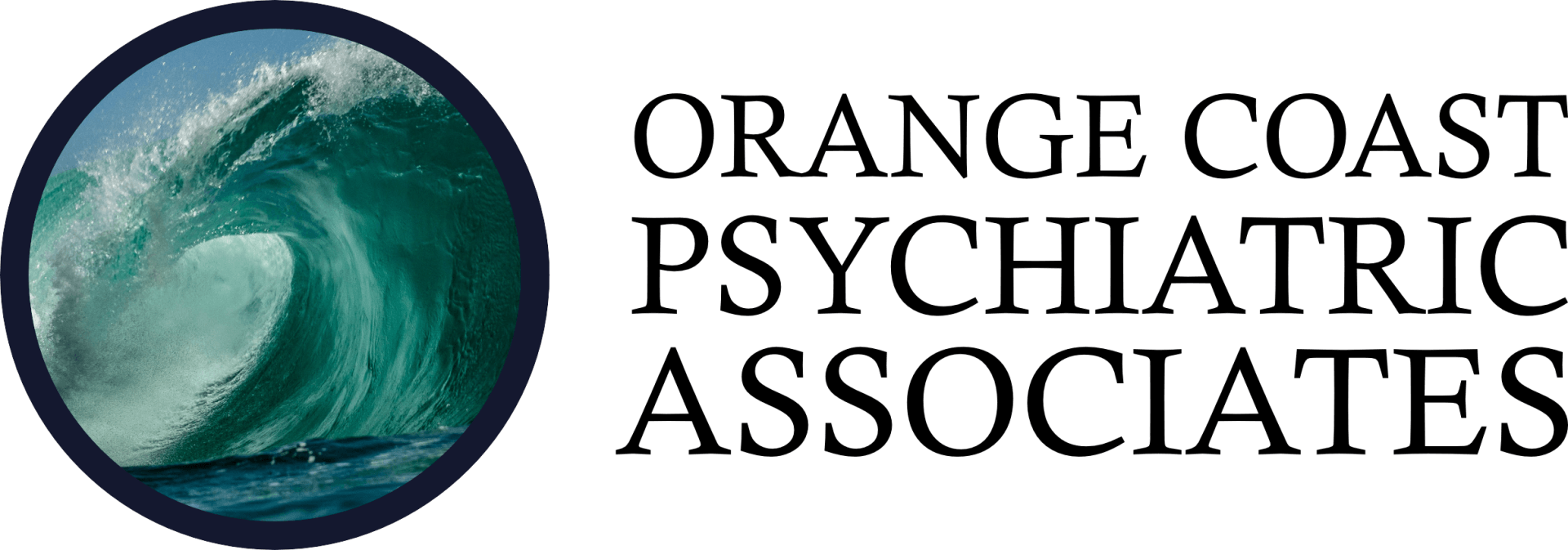What You Need to Know About Transcranial Magnetic Stimulation (TMS) Therapy

What is TMS therapy?
Transcranial magnetic stimulation (TMS) is a type of brain stimulation therapy.
It’s a noninvasive treatment that uses electromagnetic pulses to stimulate nerve cells, which may improve symptoms of neurological or mental health disorders.
TMS is mainly used to treat depression. It’s had success helping people who don’t respond to antidepressant medication and psychotherapy. In fact, in 2008 the Food and Drug Administration (FDA) approved TMS for this purpose.
There’s also some evidence that TMS may help other disorders, like anxiety and Parkinson’s disease.
Since TMS uses repetitive electrical impulses, it’s sometimes called
repetitive transcranial magnetic stimulation (rTMS). The terms are often used interchangeably.
If you’re curious about the benefits and side effects of TMS, read on.
How TMS therapy works
The therapy is done by a TMS technician or TMS physician. It’s an outpatient procedure, so it may be done in a medical clinic. If it’s done in a hospital, you won’t need to stay overnight.
Before the procedure, you’ll need to remove items that are sensitive to magnets, like jewelry.
Here’s what you can expect during TMS:
- Your technician will have you wear earplugs to minimize the clicking sound of magnetic impulses. They’ll have you sit in a comfortable chair. You won’t need general anesthesia, and you’ll be awake throughout the treatment.
- If it’s your first session, your technician will measure your head to determine where to place the magnetic coil. They’ll also take other measurements to personalize the settings on the TMS machine.
- Your technician will place the coil above the front area of your brain. Next, they’ll start the treatment.
- You’ll hear a clicking sound as the magnetic impulses are released. You’ll also feel a tapping or knocking sensation beneath the magnetic coil.
- The treatment can last 30 to 60 minutes. You can drive yourself home after the procedure and resume normal activities.
You’ll need to repeat the procedure 5 days a week, for about 4 to 6 weeks. The exact length of your treatment depends on your response and specific condition.
TMS therapy benefits
There are many possible benefits of TMS therapy. Researchers are still studying the procedure, but it may help the following conditions:
TMS therapy for depression
TMS is primarily used to treat major depressive disorder (MDD), sometimes simply called depression.
It’s generally recommended for those who haven’t found relief from medication and psychotherapy. This is called treatment-resistant depression. Approximately 30 percentTrusted Source of people with depression don’t respond to these treatments.
According to 2015 researchTrusted Source, depression is linked to reduced activity in the prefrontal cortex. This part of the brain is involved with depression symptoms, like low energy levels and appetite changes.
TMS may help by stimulating nerve cells and increasing activity in this area.
TMS therapy for obsessive-compulsive disorder (OCD)
TMS may improve symptoms of obsessive-compulsive disorder (OCD).
The FDATrusted Source approved TMS for OCD in 2018. As with depression, TMS is recommended if a person with OCD hasn’t responded to medication and psychotherapy.
According to one studyTrusted Source, people with OCD often have increased activity between the prefrontal cortex and striatum. This hyperconnectivity is associated with severe OCD symptoms.
TMS can be used to inhibit the activity in this part of the brain, thus reducing OCD symptoms.
TMS therapy for anxiety
As TMS treats psychological disorders like depression and OCD, it may also ease anxiety. That’s because these conditions often cause anxiety symptoms.
TMS could also be beneficial for generalized anxiety disorder (GAD).
In anxiety, there’s often increased nerve cell activity in the prefrontal cortex. TMS may reduce the activity in this region, according to a 2019 studyTrusted Source.
TMS for post-traumatic stress disorder (PTSD)
According to a 2019 reviewTrusted Source, TMS showed effectiveness for post-traumatic stress disorder (PTSD). As mentioned, TMS can target the prefrontal cortex, which regulates how you process fear and worry.
A 2018 trialTrusted Source found that TMS alongside cognitive processing therapy was effective for PTSD. The therapeutic effect of this combination lasted for 6 months.
TMS for stroke rehabilitation
There’s some evidence that TMS may help stroke rehabilitation.
A stroke happens when blood flow to the brain is blocked or reduced, causing brain cells to die. This can result in long-term loss of muscle movement.
According to research, using TMS after a stroke could promote motor recovery. The idea is that the magnetic impulses can alter the activity of the motor cortex, the part of the brain that controls voluntary movement.
A 2017 article also shares that TMS may improve dysphagia, or difficulty swallowing, by stimulating the motor cortex. They add that dysphagia affects 50 percent of people who have experienced a stroke.
TMS for schizophrenia
Schizophrenia is a chronic, and often severe, psychiatric disorder.
A main symptom of the condition is auditory hallucinations, which affect 75 percent of people with schizophrenia.
According to a 2019 review, targeting the temporoparietal cortex could be beneficial for auditory hallucinations. This part of the brain, which is involved in language, is typically overactive in schizophrenia.
TMS for Parkinson’s disease
Parkinson’s disease is a neurological disorder. It causes motor dysfunction, including tremors, balance issues, and freezing of gait. Freezing of gait occurs when you feel frozen and can’t move while walking.
A 2020 studyTrusted Source found that TMS may improve freezing of gait. According to the researchers, TMS normalized the connections between parts of the brain involved in gait freezing.
TMS for Alzheimer’s disease
TMS might have benefits for Alzheimer’s disease, a form of dementia. This disorder causes progressive memory loss and cognitive decline.
According to newer researchTrusted Source, it’s thought that TMS could help Alzheimer’s disease by altering the neural connections involved in memory and learning. However, more research is necessary to understand how TMS can manage Alzheimer’s disease.
TMS for chronic pain
TMS could potentially improve chronic pain conditions, such as fibromyalgia. A 2017 analysisTrusted Source shares that it may help by stimulating the motor cortex and controlling neurotransmitters involved in pain.
It’s worth noting that depression and chronic pain often occur together. Depression can worsen chronic pain, so TMS may help by treating depression symptoms.
TMS for nicotine addiction
Nicotine releases dopamine, also called the “happy hormone.” It sends signals to the reward system of your brain, including the prefrontal cortex, resulting in nicotine cravings and addiction.
According to a 2013 studyTrusted Source, TMS could help reduce nicotine cravings by targeting the prefrontal cortex.
The researchers think that TMS promotes the release of dopamine, which reduces the need for nicotine.
TMS for multiple sclerosis
Multiple sclerosis (MS) is a chronic autoimmune disorder that affects the nervous system. It commonly causes spasticity, or muscle tightness that makes it difficult to move.
In a 2019 studyTrusted Source, researchers used TMS on the motor cortex of people with MS. The treatment, combined with physical therapy, was found to decrease spasticity.
TMS therapy success rate
To date, TMS therapy has mostly been studied as a treatment for depression.
The success rate of TMS for depression is promising. Response rates for depression are between 30 and 64 percentTrusted Source.
More research is needed to understand the success rate for other medical conditions.
When is transcranial magnetic stimulation used?
If you have depression, a doctor will likely recommend antidepressants and psychotherapy before TMS.
However, you may be a good candidate for TMS if you:
- have used one or more antidepressants without results
- have experienced negative side effects when using antidepressants
- are a child or teenager
If you’re young, TMS might be an ideal choice. That’s because younger people are more prone to developing adverse side effects from antidepressants.
Who should avoid this treatment?
TMS is considered safe, but it’s not for everyone.
You should avoid this treatment if you have metal in your head, such as:
- deep brain stimulators
- electrodes
- neck or brain stents
- aneurysm clips or coils
- shrapnel or bullet pieces
- facial tattoos with metallic ink
- metal plates
- cochlear implants
- permanent piercings
The magnetic fields in TMS can make these implants heat up or move, which can cause serious injuries.
It’s OK to get the treatment if you have braces or dental fillings.
You may also need to avoid TMS if you:
- have a history of epilepsy or seizures
- are taking stimulants
- have a medical condition that increases the risk of seizures
Side effects of transcranial magnetic stimulation
TMS side effects are uncommon. If complications do occur, they may include:
- mild headaches (most common)
- lightheadedness
- scalp pain
- neck pain
- tingling
- facial twitching
- sleepiness
- altered cognition during treatment
Symptoms like headaches and lightheadedness usually go away after several treatments.
There’s also the risk of seizures, but this side effect is rare. There’s a 0.1 percentTrusted Source risk of developing seizures during a course of TMS therapy.
How much does TMS therapy cost?
One course of TMS can cost between $6,000 to $12,000 out of pocket.
Your health insurance provider might offer coverage, but this depends on your medical history. You may be required to try at least four antidepressants before receiving TMS coverage.
Alternatively, they might provide coverage if you experience negative reactions when using antidepressants.
Is TMS therapy covered by Medicare?
If antidepressants and psychotherapy don’t work for you, Medicare will cover TMS therapy.
Do you have to miss work for TMS therapy?
Since you’re expected to get treatment 5 days a week for multiple weeks, you may have to miss a few hours of work each day. This depends on your schedule, the location of the clinic, and the time of your appointments.
One session can take anywhere from 30 to 60 minutes, so you may be able to do the treatment before or after work.
Takeaway
TMS targets the activity of nerve cells in your brain, which may alleviate depression symptoms. It could also have benefit for disorders like OCD, anxiety, and PTSD as well.
The procedure may even improve motor dysfunction, making it potentially helpful for Parkinson’s disease, multiple sclerosis, or stroke rehabilitation.
If you’re interested in TMS, talk with a doctor. You may be a good candidate if you’re young, have a low risk of seizures, and haven’t felt relief from antidepressants.
This article originally published by Healthline
Medically reviewed by Timothy J. Legg, Ph.D., CRNP — Written by Kirsten Nunez on January 20, 2021
Orange County Psychiatric Associates, in Mission Viejo, works with adolescents, and adults to enable them to live their lives to their fullest. Orange Coast Psychiatric Associates tailors treatments based on the understanding that both body and mind must be treated in order to promote better mental and physical health. Let us help you improve your quality of life with specialized care for you.




